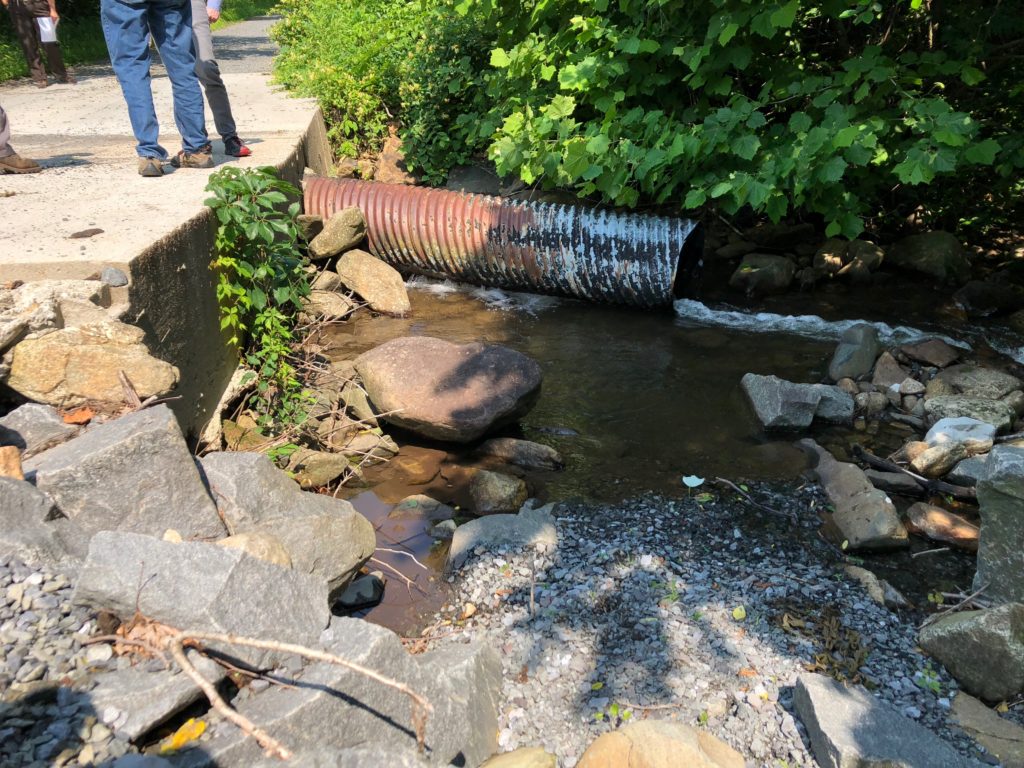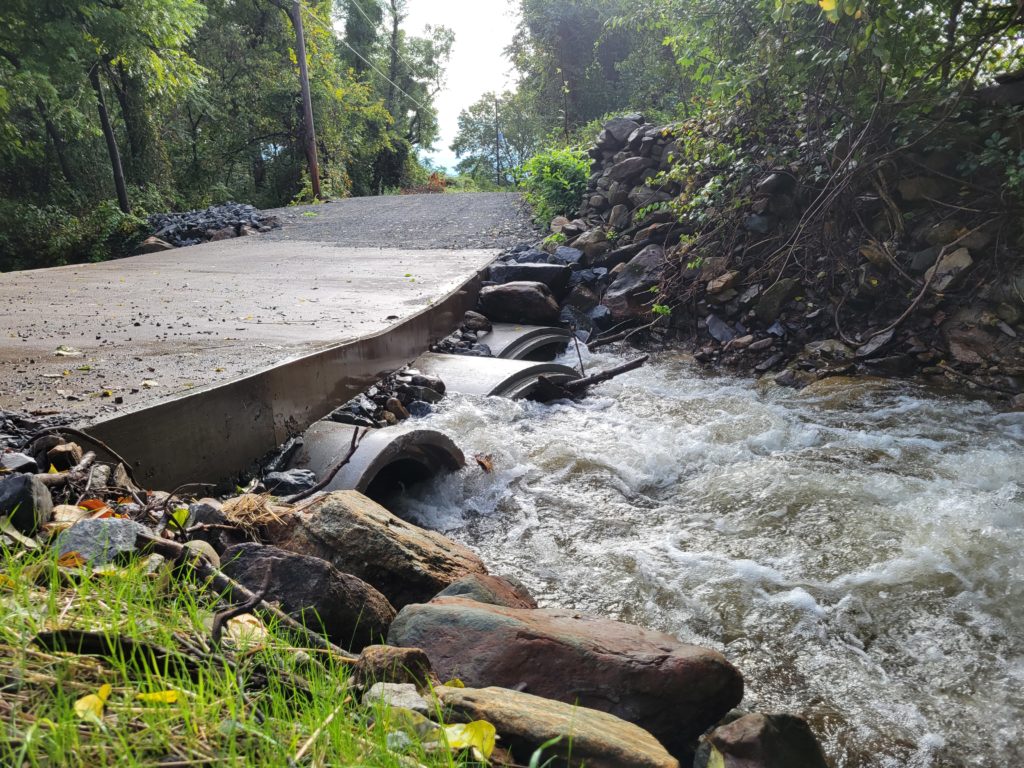Lovingly called “brookies,” eastern brook trout spend their lives in the freshwater streams of Appalachia. Brook trout can only survive in cold, clean water, so their presence or absence in streams is a sign of ecosystem health, making them an important “indicator species.”
Unfortunately, brookies are more often absent than not; even their population within Shenandoah National Park has declined with the rise of various human impacts. One of the biggest is man-made barriers in the form of collapsed concrete culverts and rusted metal tubes. These impede fish passage by raising the stream’s flow too far above the streambed or by constricting flow of water and collecting too much sediment to allow fish through. A 2013 PEC survey of 133 stream crossings in the Piedmont, which consisted of 58 percent public roads and 42 percent private drives, found that fewer than half allow full movement for aquatic species.
That’s why PEC has been working with state agencies, partner organizations and landowners to improve fish passage across the Piedmont, one barrier at a time. In the last five years, we have reconnected 18 miles of streams for better fish passage, and in the process, both cleaned these stream waters and improved their resiliency against the increased stream flows pre- predicted under climate change.
This summer, we completed our second of three restoration projects at the headwater stream Bolton Branch in Rappahannock County. Flowing from the Blue Ridge Mountains, it’s one of the last stretches of trout habitat and, until recently, was fragmented by both public and private stream crossings.
In 2019, we worked with a conservation-minded landowner to replace a low-water ford with a 40-foot open-span bridge and restore 800 feet of Bolton Branch with native vegetation. It was a significant effort, but with the great reward of lush wildflowers, stabilized streambanks and a gentle stream flow.
A stone’s throw away was another crossing, with a small, raised culvert, barely spanning five percent of the bank—not ideal for brook trout travel.
PEC teamed up with Virginia Department of Transportation (VDOT) and the National Park Service to engineer a better, wider-spanning crossing completed this August. This stream crossing is now opened up to over 50% of the bank, allowing brook trout and other aquatic wildlife to swim freely.
AFTER: The new crossing spans the entire channel, which improves stream resilience during high flow flood events and allows fish passage. Photo by Celia Vuocolo.
“VDOT has long been concerned with improving stream crossings in our inventory to include stronger protections for aquatic species,” says VDOT Resident Engineer D. Mark Nesbit, who worked on the project. “We were excited about the opportunity at Bolton Branch and hope this sort of design and installation can be a model for future projects.”
And we’ve seen lots of native fish, thanks to the Virginia Department of Wildlife Resources’s help conducting electrofishing surveys. After the first Bolton Branch project, brook trout population counts increased by over 30 percent. This year, we spotted an abundance of various-sized brook trout and other characteristic stream species like mottled sculpin and black-nosed dace near the newly replaced crossing.
With two restoration projects complete and a capstone crossing replacement already slated for work by Trout Unlimited, brookies in Bolton Branch will have soon two full miles of reconnected habitat for use as refuge—a stark difference from the eroding banks, fast-moving currents and shrapnel rocks trout previously had to navigate.
Bolton Branch is just one success story of collaboration for the brook trout. With 100+ miles ahead in the Piedmont alone, a coordinated, continued effort is essential. Visit pecva.org/trout to learn how you can get involved.
We’d like to thank the following partners and funders: the U.S. Fish and Wildlife Service, Shenandoah Streamworks, Virginia Department of Wildlife Resources, Trout Unlimited, Friends of the Rappahannock, VDOT, Shenandoah National Park, Ecosystems Services LLC, the Ohrstrom Foundation, George L. Ohstrom, Jr. Foundation, Nimick Forbesway Foundation, and PEC’s Krebser Fund for Rappahannock County Conservation.
This story appeared in The Piedmont Environmental Council’s member newsletter, The Piedmont View. If you’d like to become a PEC member or renew your membership, please visit pecva.org/join.
Note: This article originally stated more than 20 miles of stream had been connected. The number has since been corrected to 18 miles.


